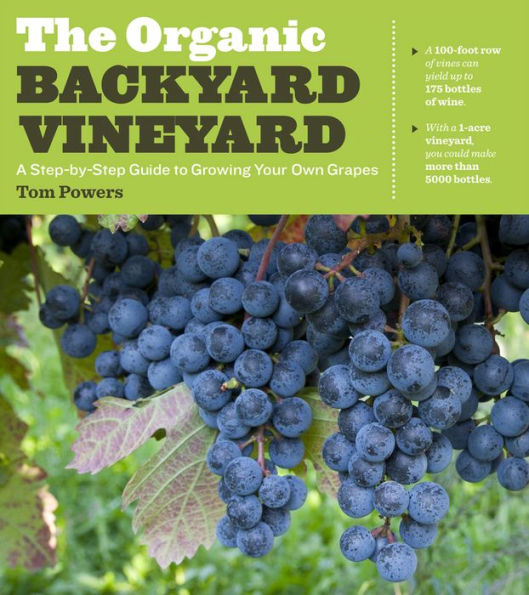
The Organic Backyard Vineyard: A Step-by-Step Guide to Growing Your Own Grapes
188
The Organic Backyard Vineyard: A Step-by-Step Guide to Growing Your Own Grapes
188Paperback
-
SHIP THIS ITEMTemporarily Out of Stock Online
-
PICK UP IN STORECheck Availability at Nearby Stores
Available within 2 business hours
Related collections and offers
Overview
- Design and build your own home vineyard
- Select the best grapes for your region
- Maximize your yield
- Use the latest organic techniques
- Build a simple, strong trellis to maintain your vines
- Harvest your grapes at just the right time
- Store the bounty for winemaking

Product Details
| ISBN-13: | 9781604692853 |
|---|---|
| Publisher: | Timber Press, Incorporated |
| Publication date: | 06/12/2012 |
| Pages: | 188 |
| Product dimensions: | 7.90(w) x 8.90(h) x 0.60(d) |
About the Author
Read an Excerpt
Preface Vineyards have been around for a very long time. Maps of Mesopotamia, ancient Egypt, and Gaul all show vineyards. The Babylonian legend The Epic of Gilgamesh refers to wine as far back as 6000 years ago. The Romans were so fond of wine that they had a god, Bacchus, devoted solely to the fermented juice of the grapevine. In fact, the Romans did a great deal to advance winemaking in Europe, a tradition that was taken up by the French, Italians, and Germans. Early Americans were quick to plant vineyards in the new world, notably Thomas Jefferson in Virginia. Nowadays, there are thousands of vineyards in almost every state and province of North America. Since the 1970s, winemaking in both Europe and America (and many other regions around the world) has become a science as well as an art, with plenty of opinions and theories about all aspects of growing grapes and making wine. It’s true that for premium quality wine, you need good grapes. But many growers and winemakers complicate the process of grape-growing. As a partner in a vineyard planting and maintenance operation, I have directed the development of more than 100 vineyards, many of them small backyard operations. This first-hand experience has taught me that it is possible to grow grapes organically, provided you work with the natural resources at hand rather than trying to fight against them. My purpose in writing this book is to simplify the process so that an individual with the right conditions can build and manage a vineyard in a sustainable fashion to produce premium quality grapes. I come from a long line of farmers. My maternal grandfather, Thomas W. Mabrey, settled in the Imperial Valley of California on the Mexican border, raising cotton in 1911 and later starting a dairy farm that supplied milk to the Golden State Creamery. My paternal grandparents, Thomas W. Powers and Ida Powers, were orange growers in Florida starting in 1910. I can think of no better life than that of a grower caring for the land and its bounty. The chapters in this book follow roughly the same step-by-step sequence that you will follow in building your vineyard, from the planning stages, through the installation process, and finally to harvest time. Throughout the book I refer to one scientific process—photosynthesis—which is the means by which the green tissues of plants use energy from the sun to convert carbon dioxide (CO2), an atmospheric gas, to sugar. This is important because the sugars are the basic building blocks of the components that ultimately give wine its flavor. Much of the work in the vineyard is devoted to maximizing photosynthesis. That’s why proper management of the green canopy of the plants is the most important issue that I can stress in caring for your vines. Yet please remember that grapevines are very forgiving. If you have the right amount of sun, water, soil, and other basic requirements, even if you make a mistake and pinch or break off the wrong shoot, leaf, or berry, don’t worry. There will almost always be one that grows back. Be patient with your vines, take care of your soil, and practice good vineyard management, and your vineyard will reward you with good-quality fruit year after year. Planting a vineyard is a dream for many people who have even a small amount of land. I hope this book helps you to grow your own vineyard, and that the experience is enormously satisfying, only rarely frustrating, and never boring. Enjoy.








